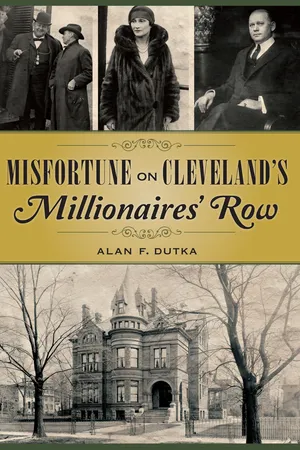
This is a test
- 147 pages
- English
- ePUB (mobile friendly)
- Available on iOS & Android
eBook - ePub
Misfortune on Cleveland's Millionaries' Row
Book details
Book preview
Table of contents
Citations
About This Book
Extreme wealth could buy a mansion in Millionaires' Row but not immunity from unsavory business dealings or shameful behavior.
May Hanna gave her millionaire ex-husband's hired Pinkerton detectives the slip to sneak out of the country. To escape financial embarrassment, James Potter, the manager of a prominent Euclid Avenue apartment building, gave his family cough medicine laced with poison, killing his entire family including himself. Married to a Millionaires' Row doctor, the infamous con woman Cassie Chadwick posed as Andrew Carnegie's illegitimate daughter and forged a fake $5 million check. Author Alan Dutka delves into sixteen tales of anguish and deceit that offer a startling perspective on Cleveland's super-rich.
Frequently asked questions
At the moment all of our mobile-responsive ePub books are available to download via the app. Most of our PDFs are also available to download and we're working on making the final remaining ones downloadable now. Learn more here.
Both plans give you full access to the library and all of Perlego’s features. The only differences are the price and subscription period: With the annual plan you’ll save around 30% compared to 12 months on the monthly plan.
We are an online textbook subscription service, where you can get access to an entire online library for less than the price of a single book per month. With over 1 million books across 1000+ topics, we’ve got you covered! Learn more here.
Look out for the read-aloud symbol on your next book to see if you can listen to it. The read-aloud tool reads text aloud for you, highlighting the text as it is being read. You can pause it, speed it up and slow it down. Learn more here.
Yes, you can access Misfortune on Cleveland's Millionaries' Row by Alan F Dutka in PDF and/or ePUB format, as well as other popular books in Histoire & Histoire de l'Amérique du Nord. We have over one million books available in our catalogue for you to explore.
Information
Topic
HistoireSubtopic
Histoire de l'Amérique du NordPart I
Affairs, Infidelity and Betrayal
Chapter 1
Multiple Affairs to Remember
The elopement of Nonnie May Stewart and George Ely Worthington deprived Euclid Avenue’s society of what would certainly have been one of the most important social events of the year. But the couple’s brief, scandal-ridden marriage provided spicy gossip for years to come.
Nonnie, born in 1878 to a wealthy Zanesville merchant, relocated to Cleveland as a child. Her father, William Charles Stewart, prospered as president of the Forest City Stone Company. The business mined sandstone in Euclid Township (now South Euclid) and sold stones used for window caps and sills, steps, landings, porches and sidewalks. By 1900, the Stewart family had joined Cleveland’s upper crust by purchasing a Euclid Avenue home.
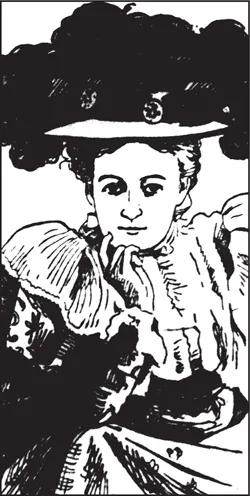
Born into wealth, Nonnie May Stewart acquired even more riches through marriage and then became a princess. Courtesy of the Cleveland Press.
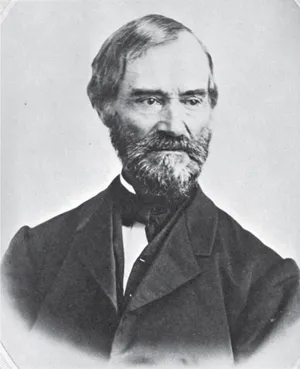
Through hard work and excellent business sense, George Worthington turned a small amount of money into a national hardware empire. Courtesy of Cleveland Public Library, Photograph Collection.
Nonnie attended elementary school on Carnegie Avenue near East Fifty-fifth Street; her classmates remembered her as bright, vivacious and highspirited. Several of her peers predicted she would someday be a princess, but Nonnie scoffed at the idea, claiming she desired a wealthy, “real” man instead of a stuffy prince. Yet in her short forty-five-year life, Nonnie accomplished both by marrying into families of wealth and royalty.
As the son of Ralph Worthington and grandson of industrialist George Worthington, George Ely resided on or near Millionaires’ Row from the time of his birth. His grandfather, at the age of seventeen, had acquired a job as a hardware store clerk in Cooperstown, New York. Four years later, he relocated to Cleveland with little money but enough ambition to establish his own hardware business. He traveled hundreds of miles on horseback throughout the country selling his products and establishing business relationships. His company expanded into a national wholesale operation, and he also founded the Cleveland Iron and Nail Company, invested in mining and blast furnace companies and served as president of the First National Bank of Cleveland.
Without the burdens of building a business from the ground up, Ralph successfully managed his father’s hardware company while still allowing time for spirited and occasionally precarious hunting trips. On one of these outings, Ralph barely survived an unnerving attack by three Wyoming grizzly bears. The animals knocked him down, bit his leg and tore flesh from his body. Their assault ended prematurely when one bear bit into Ralph’s coat, igniting a box of matches and scaring the assailants into retreat.
On October 1, 1894, George Ely and Nonnie eloped. At the age of twenty-two, George had not yet entered the Gilded Age business world, while eighteen-year-old Nonnie had just reached the legal marriage age. Reverend Arthur G. Upham, pastor of a Prospect Avenue Baptist church near East Forty-sixth Street, married the couple in his home, even though he had never met either one prior to the wedding. At the conclusion of the brief ceremony, George and Nonnie hurried to the old lakefront station, where they boarded a train headed for New York City.
Lewis Ford, the only member of the wedding party besides the bride, groom and minister, delivered letters to the couple’s families announcing their already-in-progress elopement. Regarding the reactions of the parents, the Cleveland Press noted, “The youthfulness of the contracting parties was the only objection to the wedding” but then incorrectly speculated, “Doubtless all will be forgiven now.”
The couple resided first on East Fifty-fifth Street and soon after on Sibley Street, at the time known as the “son-in-law street” because many newly married daughters of Euclid Avenue millionaires elected to reside on Sibley, a road between Euclid and Prospect Avenues near East Fifty-fifth Street. Youthful George rapidly ascended to secretary of his father-in-law’s stone company. He commanded special respect as an expert pigeon shooter, a popular sport at the time, and soon developed a reputation for staying out late without the accompaniment of his wife. In quiet conversation, Euclid Avenue’s society often chatted about the most recent reports of George and Nonnie’s marriage tribulations and speculated about the timing of their anticipated separation.
The marriage did not survive five years; the uncontested divorce hearing required less than fifteen minutes to complete. Nonnie charged George with gross neglect and violation of his marriage vows. She testified her husband spent a great deal of his money on guns, ammunition and other women, although not always in that order. She depended completely on her father and grandparents for support, without which she would have been destitute. Nonnie didn’t ask for alimony, and as her future unfolded, she certainly didn’t need it. Not surprisingly, George lost his executive position at the stone company.
Following the divorce, George filed an alienation of affections lawsuit, demanding Frederick Mortimore Nicholas pay $50,000 in damages. According to George, he and Nonnie had lived happily and peacefully for about two years until Frederick entered his wife’s life. As her lover, Frederick prejudiced and poisoned the mind of Nonnie by telling her she had made a mistake in marrying someone so substantially inferior to Frederick in every way. George claimed Nonnie and Frederick conferred as to “the best way of getting rid of me” and “carried on one continuous joyous love fest with each other.” Frederick even intended to place his photograph in an expensive pair of buckle garters he had purchased for Nonnie, but the plan failed when George discovered the intimate Victorian garment. In a strangely modified ménage a trois, Nonnie, so enamored with Frederick, refused to attend the theater with George unless Frederick accompanied them.
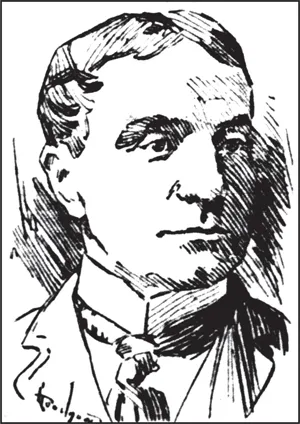
Charismatic Frederick Mortimore Nicholas used an excellent singing voice and captivating charm to lure Nonnie May Stewart into an affair that ended both of their marriages. Courtesy of the Cleveland Press.
The son of J.W. Nicholas, an extremely wealthy capitalist and vessel owner, Frederick exuded a great deal of charisma and sex appeal. In addition to coming from a rich family, he enjoyed singing. A splendid tenor voice made him very popular within musical circles and among church choirs. He further enhanced his celebrity status with memberships in the Hermit Club, Singers’ Club and Shaker Country Club.
Frederick encountered his share of obstacles as he courted George’s wife. On one occasion, in a very one-sided fistfight, George severely bloodied Frederick’s face. As Nonnie and a few guests watched in horror, George continued to punch Frederick, stopping only when he tired of the inequitable slaughter. The lurid divorce publicity created an even bigger impediment in Frederick’s life. When the scandal broke, Frederick’s seventeen-year marriage to the former Jennie Hopper, a daughter of Standard Oil magnate George Hopper, ended when Jennie sued for divorce.
Neither George nor Nonnie spent much time grieving over their lost love. Two weeks after the finalization of his divorce, George married the widow Lavina Pinkley, a former Clevelander now living in Chicago. After Nonnie filed for divorce, George relocated to Chicago, obtained a job in a sporting goods store and courted Lavina. The couple decided to move up their wedding plans when Lavina required surgery that threatened her life. After her successful surgery, the couple faded from the Cleveland scene; George lived to be seventy-eight before his death in 1950.
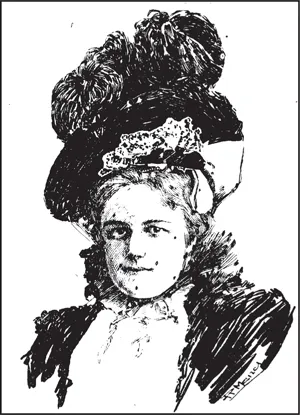
Lavina Pinkley, George Ely Worthington’s second wife, married him shortly after he obtained a divorce from Nonnie May Stewart. Courtesy of the Plain Dealer.
Nonnie also wasted little time in remarrying, but not to Frederick. She chose instead William Batemann Leeds, one of the richest men in the United States. Attended by a small number of invited guests, the ceremony took place in her parents’ Euclid Avenue home near East Eighty-third Street. The groom spent $500,000 on wedding gifts, but that amounted to only half of what he paid his former wife of seventeen years to divorce him. She consented after obtaining a milliondollar payoff. William married Nonnie just three days after the finalization of his divorce. As a special added present, he presented his new wife with a yacht and the keys to Rough Point, the former Newport estate of F.W. Vanderbilt.
Originally a florist, William entered the railroad business and purchased a tinplate company in his hometown of Richmond, Indiana. A substantial inheritance given to his former wife helped him launch his career in tin. He and his partners expanded the business, capitalizing on new U.S. tariffs that lessened competition from more established European businesses. William eventually became known as America’s “tin king.” After her divorce, William’s first wife made public appearances at the same events and parties attended by Nonnie, apparently attempting to upstage the new Mrs. Leeds with her own lavish collection of jewels and gowns.
Nonnie and William lived extravagant lives, owning homes in Chicago and on Fifth Avenue in New York City. On a visit to Paris, William bought Nonnie a necklace said to be valued at $200,000. She later engaged in a celebrated battle with the Treasury Department over the appraised value and taxes due when she returned to the United States with the valuable necklace.
Although happily married, William consistently worked long, hard hours. After suffering two strokes, he visited Paris to consult a specialist. Later returning to Paris to regain his health, he experienced a fatal stroke and died at the palatial Hotel Ritz just one day before his planned return to the United States. Not yet forty-seven years old, William left Nonnie an estate worth about $29 million.
American society referred to her as the “tin plate heiress,” and in Europe she became the “golden widow.” But during the First World War, Nonnie worked actively in relief efforts on both sides of the Atlantic; these efforts changed her identity to the “iron lady.” A divorcée and widow by the age of thirty, Nonnie returned to Europe to socialize among the aristocrats. At one of the gatherings, she met Prince Christopher of Greece and Denmark. The prince, dazzled by her beautiful blue eyes, brown hair, pleasant personality and great wealth, soon proposed to Nonnie. The couple remained engaged for six years until they finally married in 1920 after the royal family’s opposition to the prince marrying a twice-wed American subsided.
Nonnie joined the Greek Orthodox Church and became Princess Anastasia of Greece. A year after her wedding, her son, William B. Leeds, married eighteen-year-old Princess Xenia of Russia, a union that ended in divorce nine years later. Tragically, Nonnie’s marriage to Prince Christopher endured only half as long as their engagement; she died of cancer in 1923.
Meanwhile, following his divorce from Jennie Hopper, Frederick Nicholas became engaged to Florence Mae Murphy, a Euclid Avenue socialite whose father sold tools, fittings, pipes and other supplies in a business located in the Flats. Educated in Cleveland’s finest private schools, Florence attended all the most proper parties and balls. The union between Frederick, an excellent singer, and Florence, herself a fine soprano, appeared to be an ideal match almost made in heaven. But Frederick instead remarried Jennie, reviving and extending their previous union. The two remained together, enjoying winters in Pasadena and outings on golf courses, until Jennie’s death. Frederick lived as a widower for five years in the exclusive Wade Park Manor near University Circle. In 1928, at the age of sixty-eight, he married Gertrude K. Grover, a childhood friend.
Chapter 2
Adventures in the Cross Family Bedroom
In the 1870s, shocking bedroom activity in David W. Cross’s Euclid Avenue mansion interrupted the millionaire’s once-serene life. At the time, the Plain Dealer called the escapades “the greatest scandal Cleveland ever saw.” Cross, his wife and son, an in-home caregiver and a respected doctor interacted to shape a complex controversy providing a decade’s worth of decadent gossip material.
David Cross arrived in Cleveland in 1836 to study law with Thomas Bolton, a Euclid Avenue resident. He met Loraine, his future wife, at the Bolton home; as he scrutinized law books, she often visited Mrs. Bolton. Following a brief courtship, the couple married and lived in a small Euclid Avenue cottage that the two later razed to construct a striking Millionaires’ Row mansion.
After completing his studies, the young attorney founded a downtown law firm. He expanded his wealth by operating coal mines and founding the Cleveland Steam Gauge Company, a manufacturer of gauges and spring balances used in industrial operations, steam engines and locomotives. The company’s international market encompassed the United States, Mexico, South America and New Zealand.
In the 1830s, Cross served as one of the original officers of the Cleveland Lyceum, a forum for lectures, debates, discussions and exchanges of thoughts. In its first year, the organization’s members conversed about the ramifications of admitting Texas as a state and the merits and disadvantages of extending voting rights to women. Cross also enjoyed an active involvement with Leonard Case’s Arkites; the group’s collections constituted a portion of the original exhibits of the Cleveland Museum of Natural History.

In 1889, a Washington’s Birthday parade passed the imposing mansion of David W. Cross (the tall structure with the cupola). Courtesy of Cleveland Public Library, Photograph Collection.
His intellectual activities broadened even further. Based on his experiences as a serious sportsman, Cross wrote the rather distinctively titled book Fifty Years with the Gun and Rod, Including Tables Showing the Velocity, Distance, Penetration or Effect of Shot, Calculated by Leonard Case, Esq. Chapter headings included “Wild Goose Shooting,” “How to Trap Foxes, Mink and Martin,” “The Working Tools of the Craft” and “How to Apply the Knowledge You Have Got to Practical Use.”
David, Loraine and Henry L. Cross, their only child, first met Emma Bobbitt in 1873 in the London...
Table of contents
- Front Cover
- Half Title
- Title Page
- Copyright
- Contents
- Preface
- Acknowledgments
- Introduction
- Part I. Affairs, Infidelity and Betrayal
- Part II. Tragedies on the Avenue
- Part III. Bending and Breaking the Law
- Part IV. Business in the Gilded Age
- Bibliography
- About the Author